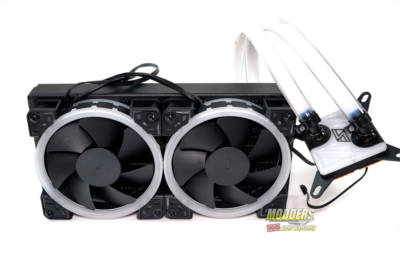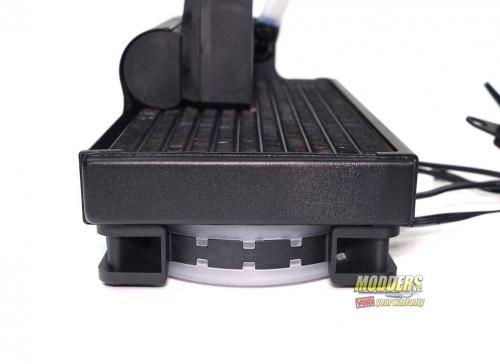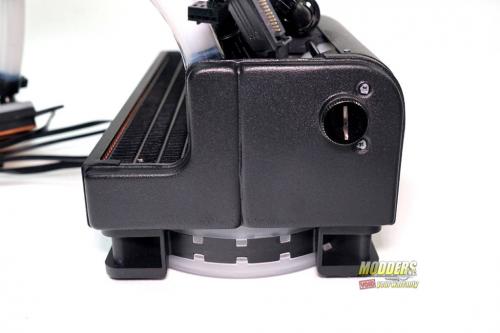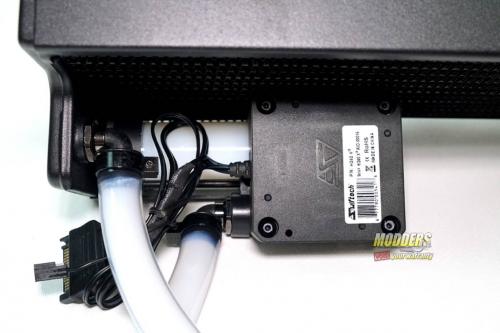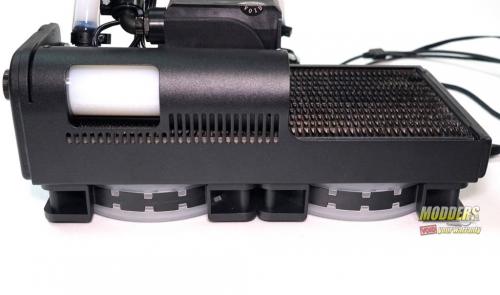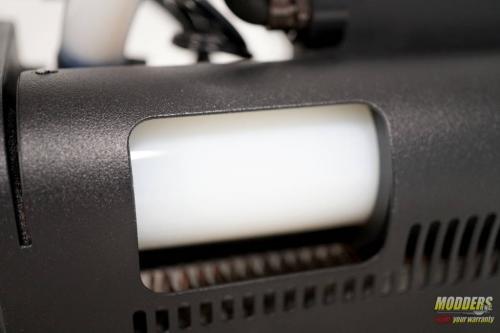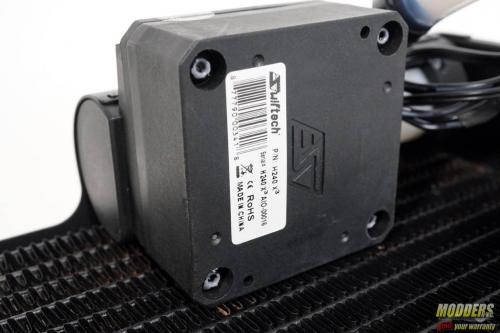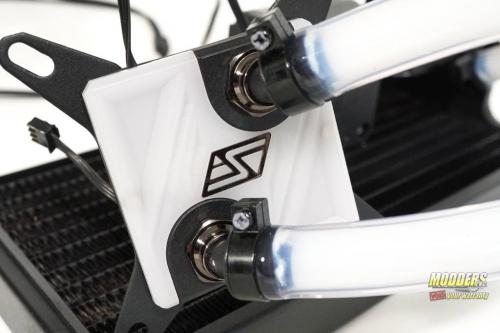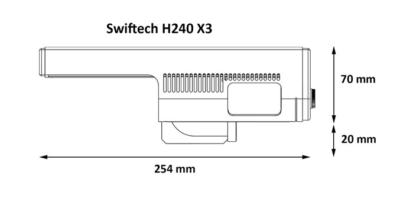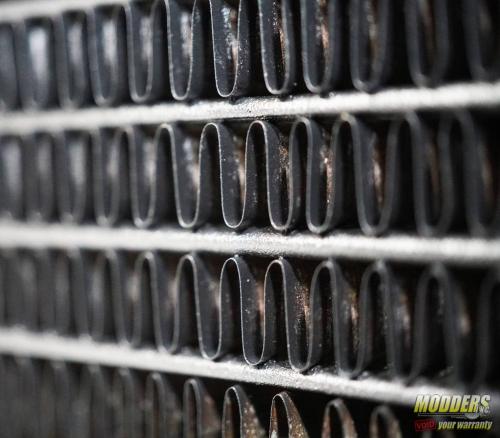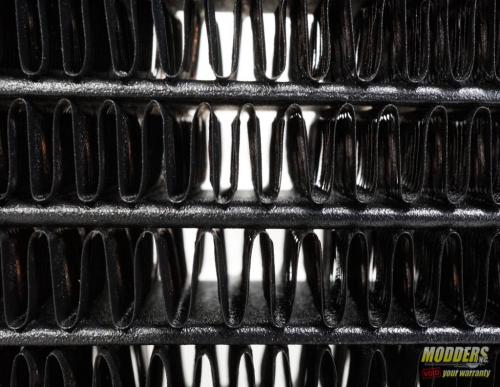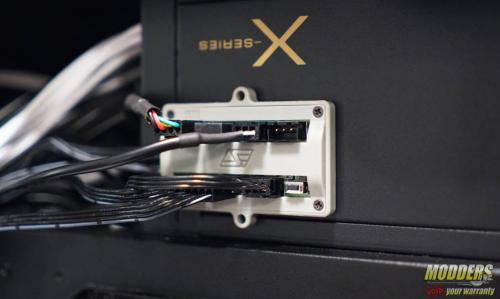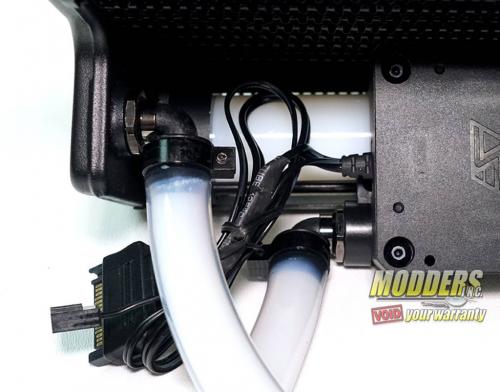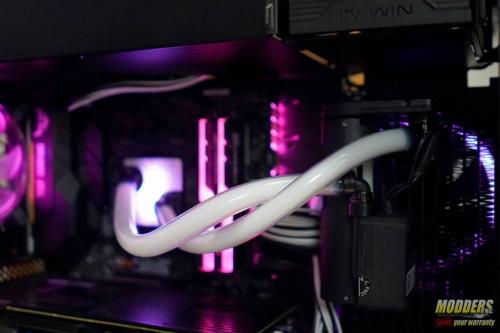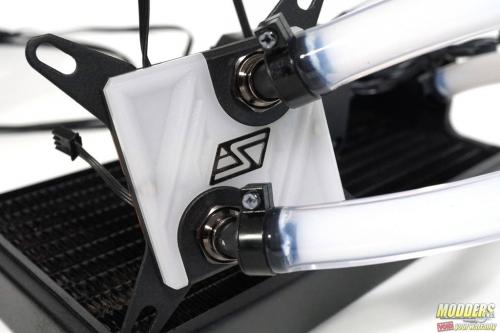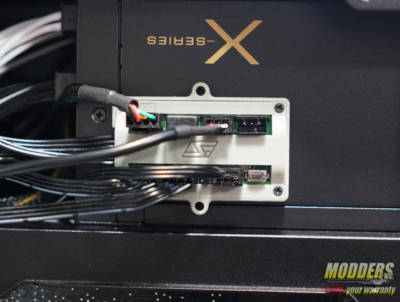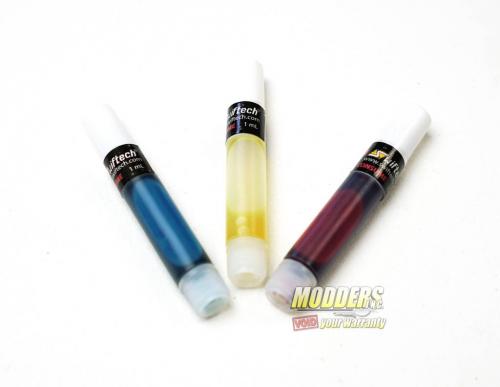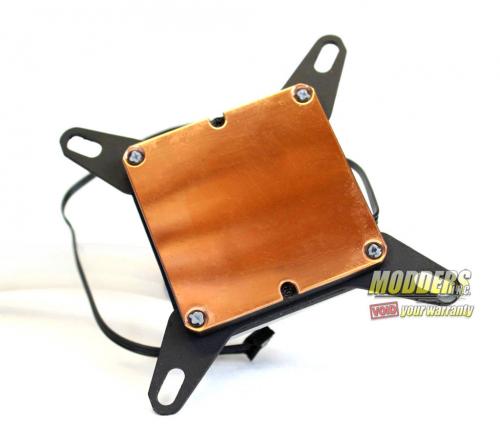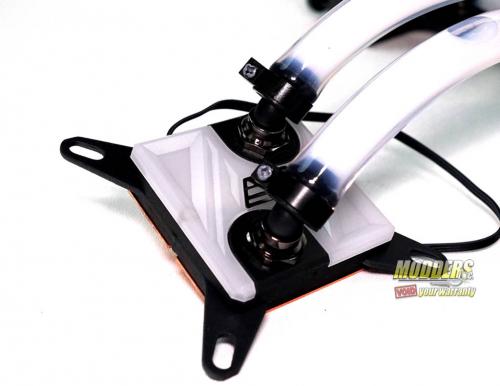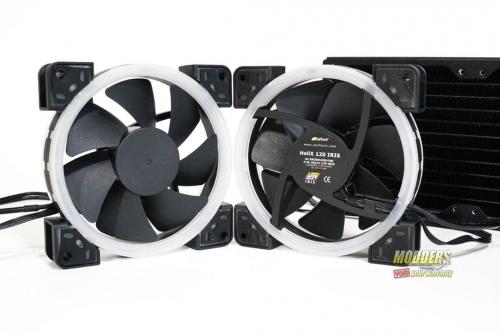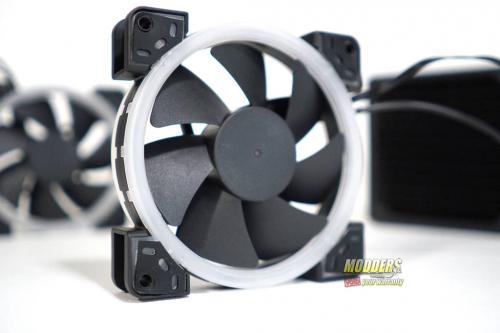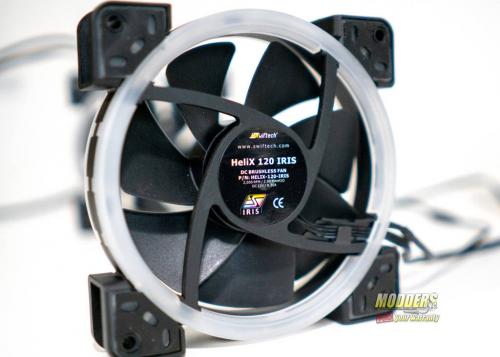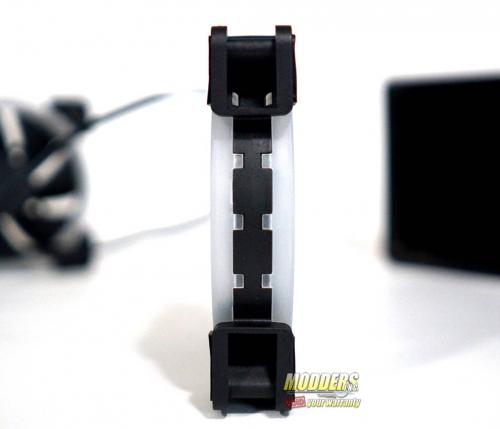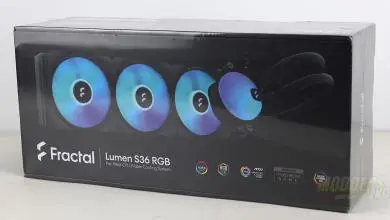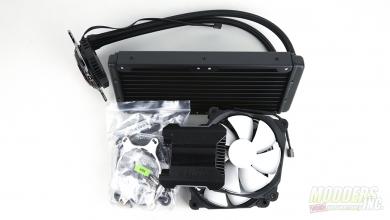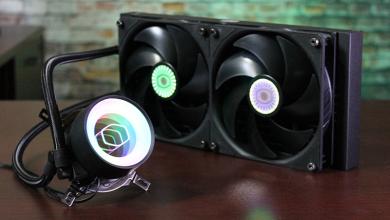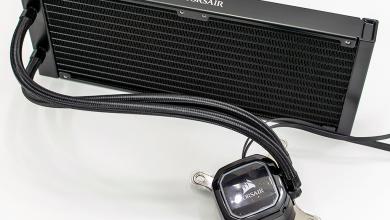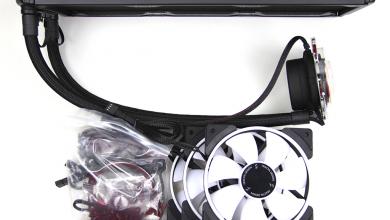As I mentioned earlier, I’ve always been a fan of Swiftech’s AIO coolers. I’ve tested every cooler in their X2 line up and still use two of them to this day, the H140 X and the H320 X2 Prestige. The H240 X3 has a similar design to the X2 line up, however, it has tweaked ever so slightly. They kept the same basic design from the X2 series on the X3. However, the plastic reservoir on the X2 series has been replaced with a tempered glass reservoir. This is nice touch. Especially since due to its placement on the radiator, not too many people would notice such a small detail. That makes me appreciate it that much more.
As I mentioned before, the newly designed Helix IRIS fans come pre-installed on the radiator. On the opposite side of the radiator is where you find the reservoir and pump. On the version we reviewed, the 5/8 tubing is connected to both the block and pump using barb fittings and are held on using clamps. These aren’t your average clamps that you simply squeeze with a pair of pliers. These clamps ate tightened down with a screw. This makes the tubing more secure and less likely to leak or worse, blow off.
The H240 X3 overall is 254 mm in length. If you get the 360 mm version, the cooler is 375 mm in length. The rest of the dimensions are the same for both the 240 and 360 variants. The actual radiator is one inch thick, or about 25 mm. However, the side where the pump and reservoir is 70 mm tall, and the pump itself adds another 20 mm. The fins have a slight triangular shape to them, just more rounded. For an AIO, the fins are rather dense. I couldn’t find a concrete answer. But when measured, we got about 16 fins per inch, or per 25 mm. The placement of the pump and reservoir are very similar to that of the X2 series, but slightly redesigned. The x2 series used an acrylic reservoir, where the X3 uses tempered glass. Also, on the X3 series, the reservoir is far less exposed. I’d assume this is for better protection of the glass reservoir. The reservoir is cover with steel that has been painted matte black. There is a picture of the H240 X3 next to the H320 X2, for comparison.
One of the most welcomed additions to the redesigned X3 series is the addition of Mayhem’s all new Pastel White Nanofluid. The X3 series has a PWM pump attached to the reservoir, much like the X2 series. The pump speed ranges from 1200 RPM up to 3000 RPM and has a max flow of 11 liters per minute. The pump is powered by a single SATA connector and controller by the IRIS ECO controller with a PWM connection.
There are two 45-degree barb fittings on the block, both of which swivel. On the pump and radiator combo, there are two 90-degree barb fittings. Both 90’s also swivel. This allows you to essentially install the H240 X3 in any position. The H240 X3 uses Mayhem’s 5/8” x 3/8” (16/10 mm) ultra-clear tubing. However, since Swiftech uses G ¼ fittings on their AIO coolers, you can change the fittings you you’d rather use ½” fittings. H240 X3 is also expendable, so in theory, you could add a GPU block to the loop if you desired. However, I’d recommend just removing the Apogee SKF LT block and just replacing it with say a Komodo water block and just use the H240 X3 to cool a GPU. This works very well. I’ve used both the H220 X2 and the H140x to cool several different cards in the past including the Titan XP, Founders Edition 1080 ti and the Poseidon 1080 ti. Both coolers worked great on all three cards. I can’t wait to throw the H240 X3 on the first 2080 ti that hits my desk. You know, for science.
The H240 X3 comes packed with Swiftech’s IRIS ECO V2 controller. This is a PWM fan hub and RGB controller that can support the pump on the AIO and three additional fans. The third PWM header allows this controller to be used with both the 240 mm and 360 mm variant of the X3 cooler. There are also three RGB headers and a small black button. This button lets you scroll through several preset colors options. At the time of writing this review, the IRIS software is still not ready. However, until then, if you feel the need to swap colors, simply hit the button on the fan controller.
On the side of the cooler is a port, with G ¼ threads for both refilling and draining the H240 X3. The cooler also comes packed with Red, Green and Blue dyes. This will allow you to change the color of the Mayhem Pastel White Nanofluid that comes prefilled in your H240 X3. This is another welcomed feature. Since the dyes are RGB, you could technically dye your fluid just about any color. However, over time, dyes can stain the tubing, as well as some reservoirs. However, being tempered glass, I think you’d be okay to add the dye.
The Apogee Sk LT block has an Acetal or Polyoxymethylene (POM) housing. Acetal is an engineering thermoplastic used in precision parts requiring high stiffness, low friction, and excellent dimensional stability. The cold plate on the SKF LT block is made up of c110 copper. The internals of the block is made up of a .125 mm x .125 mm micro-fin array. Like the pump and reservoir, the block uses G ¼ threads. The barb fittings are all swivel elbows, both 90-degree and 45-degree fittings with a 3/8” or 10 mm outer diameter. The tubing is kept in place by Black anodized aluminum clamps.
The H240 X3 comes with two Helix IRIS fans preinstalled. These are 12 volt, PWM fans that measure 120 mm x 120 mm x 25 mm and have a 4-pin header. They have a speed range of 900+/- 25% ~ 1800+/- 10% RPM and an air flow range of 24 ~ 60 CFM. The static pressure range of the Helix IRIS fans are between 0.61 and 2.35 mmH₂O. These fans are whisper quiet with a decibel range between 16 and 32 decibels. For an example, a bird call, or conversation in a library are both about 40 decibels. With my testing, running the fans at 1200 RPM, or half speed, the system ran at about 28-30 decibels. Keep in mind that that’s the entire system, not just the fans on the cooler. Either way, it was still whisper quiet. The Helix IRIS fans have an estimate life span of 60,000 hours. The RGB lighting on the Helix IRIS fans isn’t too bright and matched the rest of the RGB lighting in my system well.
